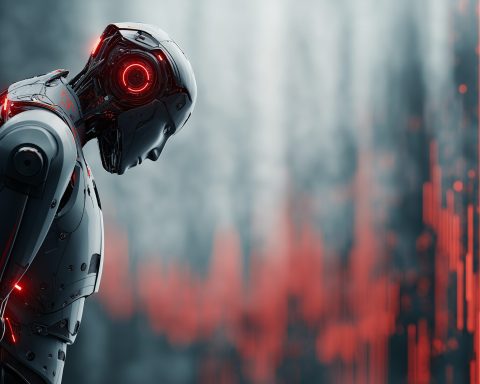- GPT-5 will be a unified model that merges OpenAI’s GPT series with its experimental o-series reasoning models, so ChatGPT-5 will automatically know when to think deeply or to use tools without users selecting a mode.
- GPT-5 will be OpenAI’s first chain-of-thought AI, enabling step-by-step internal reasoning and integrating the o3 reasoning model to improve math, coding, and multi-step analysis.
- GPT-5 will support multimodal inputs and outputs, including text, voice, and images, with OpenAI hinting at eventual video capabilities and a canvas feature for image generation and editing.
- GPT-5 will include integrated deep search and autonomous web research with citations, via a “deep research” capability that fetches and analyzes online sources during answers.
- GPT-5 will offer personalization with multiple intelligence levels, where free ChatGPT users get unlimited chat at a default level, Plus and Enterprise users gain higher-intelligence modes, and organizations can customize or fine-tune the model.
- Safety and alignment are built in, with self-checking to reduce hallucinations (targeting well under 10% factual errors), plus governance like OpenAI’s Safety & Security Committee established on May 28, 2024 and ongoing red-teaming and audits.
- Training for GPT-5 reportedly consumed 16,000+ petaflop/s-days, more than 2.5 times GPT-4, at a cost exceeding $600 million, with rumors of a parameter count above GPT-4’s approximate 1.7 trillion.
- Context length and memory are discussed, with GPT-4 offering 32,000-token context and GPT-4 Turbo up to 128,000 tokens, and GPT-5 rumored to support much larger contexts and persistent long-term memory.
- Release status as of July 2025 is that GPT-4.5 Orion launched on February 27, 2025; OpenAI said GPT-5 would arrive in weeks or months after that, with targets around May to July 2025, but it had not yet been publicly released by July 2025.
- Use cases span Advanced Research Assistant, autonomous enterprise agents that manage tasks, creative content generation across text and media, high-stakes decision support in healthcare or engineering, and potential consumer devices or AI companions such as a Jony Ive–inspired product.
Introduction: A New Leap in AI Intelligence
ChatGPT-5 (powered by OpenAI’s forthcoming GPT-5 model) is generating both hype and caution as the potential next giant leap in artificial intelligence. Touted as a step towards an “omnimodel” AI – one that can see, hear, and reason – GPT-5 is rumored to dramatically outperform its predecessor GPT-4 across the board [1] [2]. AI enthusiasts are buzzing about its possible abilities, from advanced multimodal understanding to near-human levels of reasoning. At the same time, experts urge careful rollout, noting the high stakes around safety and alignment. In this report, we compile all publicly available information (as of July 2025) on ChatGPT-5: its confirmed and rumored features, performance improvements, use cases, safety measures, release timeline, and what experts are saying about this much-anticipated AI milestone.
Confirmed Features & Capabilities of GPT-5
OpenAI’s CEO Sam Altman has shared an unusual amount of detail about GPT-5’s roadmap, confirming several major features [3] [4]. According to Altman, GPT-5 will be a unified model that integrates technologies from both OpenAI’s GPT series and its experimental “o-series” reasoning models [5]. In practice, this means ChatGPT-5 won’t force users to manually pick between modes or models for different tasks – the AI will automatically “know when to think for a long time or not” and use the appropriate tools or reasoning internally [6] [7]. OpenAI’s goal is to eliminate today’s model picker and deliver “magic unified intelligence” that “just works” for a very wide range of tasks [8] [9].
Key confirmed capabilities include:
- Chain-of-Thought Reasoning: GPT-5 is set to be OpenAI’s first “chain-of-thought” AI, meaning it can internally reason through complex problems step-by-step [10]. Altman calls GPT-4.5 (the interim model before GPT-5) the “last non-chain-of-thought model,” indicating GPT-5 will natively incorporate advanced reasoning techniques [11]. By merging in the capabilities of OpenAI’s “o-series” research models (designed for logical reasoning and problem-solving), GPT-5 should excel at math, coding, and multi-step analytical tasks that GPT-4 sometimes struggled with [12] [13]. In Altman’s words, GPT-5 will “integrate a lot of our technology, including o3” (OpenAI’s latest reasoning model) directly into the chat system [14]. This integration lets the AI dynamically decide when to engage in extended reasoning or tool use, rather than answering every query with a single-pass response.
- Multimodal Inputs & Outputs (Text, Voice, Images, and More): GPT-5 is expected to push AI’s multimodal abilities to new heights. Altman has confirmed the next-gen ChatGPT will handle speech input and output (i.e. voice conversations) as well as image understanding – and even hinted at eventual video capabilities [15]. “Multimodality will definitely be important… speech in, speech out, images. Eventually video,” Altman told Bill Gates in early 2024 [16]. GPT-4 already introduced image comprehension and, in recent updates, audio transcription; those features “had a much stronger response than we expected… We’ll be able to push that much further in GPT-5,” Altman noted [17]. In practice, ChatGPT-5 should let users converse by voice, feed in visuals, and receive answers incorporating various media – all without switching models or interfaces [18]. OpenAI has also been testing a “canvas” feature for image generation/editing, which Altman suggested could be incorporated into GPT-5’s toolkit [19]. In short, GPT-5 aims to be a true “omnimodel” AI that seamlessly blends text, audio, and visual understanding [20].
- Integrated Search and Web Browsing: Another core feature will be an integrated “deep search” capability [21]. OpenAI recently launched a browsing and research agent called “deep research,” which can autonomously scour the internet and analyze sources to answer complex queries [22] [23]. This agent, powered by a precursor of the o3 reasoning model, essentially performs multi-step web research with citations – taking on tasks that would take a human hours [24] [25]. Altman’s roadmap indicates GPT-5 will build in this web research ability, allowing it to fetch and cite up-to-date information when needed [26] [27]. In practical terms, ChatGPT-5 could autonomously decide to run a live internet search or use a tool (e.g. a code interpreter, calculator, or database) in the middle of answering a question. This expanded agentic capability means GPT-5 would not just rely on its training data; it can also “find, analyze, and synthesize hundreds of online sources” to produce an answer [28]. All of this happens behind the scenes, making the user experience more straightforward (no plug-in juggling) while delivering far more informed results.
- Personalization & Adaptive Intelligence: OpenAI insiders have hinted that GPT-5 will offer multiple “intelligence levels” or modes to better serve different user needs. Free ChatGPT users will get “unlimited chat access” to GPT-5 at a standard intelligence setting, while paid subscribers (Plus and Enterprise) can tap into higher performance modes [29] [30]. In Altman’s description, Plus users get a “higher level of intelligence” and Pro users an “even higher” level from GPT-5 [31]. This likely means the model can operate with different degrees of reasoning depth or creativity depending on tier – effectively dialing up its IQ when needed. OpenAI is also expected to enable more customization for organizations and developers, such as fine-tuning GPT-5 on proprietary data or instructing it to adopt particular personas/tones. “GPT-5 is also expected to be more customizable than previous versions,” notes one analysis, allowing individuals and companies to better personalize the AI for specific tasks or preferences [32]. All these moves align with Altman’s acknowledgment that “our product offerings have gotten too complicated” – GPT-5 is meant to simplify that with one adaptable model [33].
- Safety & Alignment Built-In: In addition to raw capabilities, OpenAI is baking in safety features at a deeper level with GPT-5 (more on this in a later section). Notably, the chain-of-thought approach itself can improve reliability – GPT-5 will “self-check” its responses, reflecting a broader industry trend of AIs internally critiquing or validating answers to reduce mistakes [34]. For example, a reasoning-enabled GPT-5 might double-check a complex calculation or verify a factual claim via its search tool before replying, addressing GPT-4’s tendency to occasionally “hallucinate” misinformation [35] [36]. OpenAI has indicated that reducing hallucinations and increasing factual accuracy is a major goal, and early tests of GPT-4.5 showed significant progress on this front [37] [38]. We can expect GPT-5 to continue this trend, with OpenAI aiming for an even more trustworthy model that knows what it doesn’t know.
Rumored & Anticipated Enhancements: In addition to the confirmed features above, the tech community has floated other potential improvements for GPT-5. One much-discussed area is context length and memory. GPT-4 introduced up to a 32,000-token context window (and GPT-4 Turbo reportedly up to 128k tokens) for longer prompts [39]. Competing models (like Anthropic’s Claude) pushed context to 100k tokens or more. It’s speculated that GPT-5 could support extremely large contexts (some enthusiasts hope for >1 million tokens), enabling it to digest entire books or maintain long conversations without forgetting earlier details [40] [41]. Similarly, users are hoping for a form of persistent long-term memory – the ability for ChatGPT to remember information across sessions, effectively learning about a user over time [42]. OpenAI has indeed tested features like persistent conversation history and even a “virtual memory” plugin, so these may appear in GPT-5’s ecosystem [43]. However, as of now these remain speculative. What’s clear is that OpenAI has been aggressively scaling up training data and model size. By one estimate, GPT-5’s training consumed 16,000+ petaflop/s-days (over 2.5× more compute than GPT-4) at a cost exceeding $600 million [44]. The model likely has a substantially larger parameter count than GPT-4 (which is rumored to be ~1.7 trillion parameters) [45], although OpenAI hasn’t confirmed sizes. All this suggests GPT-5 could possess a broader knowledge base, handle more complex inputs, and generate outputs with greater nuance and coherence than any model before it. As Sam Altman teased, “It’s not like this model [GPT-5] is going to get a little bit better. It’s going to be better across the board.” [46]
Performance Improvements Over GPT-4
OpenAI is positioning ChatGPT-5 as a massive leap forward in performance, not just an incremental upgrade. In fact, Sam Altman has compared the jump from GPT-4 to GPT-5 to the jump from GPT-3 to GPT-4 – which is saying a lot [47]. “GPT-4 kind of sucks [compared to what’s coming],” Altman quipped in early 2024, reminding people that today’s best model will look weak in hindsight once GPT-5 arrives [48]. Here are the key areas where we expect major improvements:
- Sharper Reasoning and Problem-Solving: GPT-4 already amazed users with its ability to reason through questions and tasks, but Altman admits “GPT-4 can reason in only extremely limited ways.” By contrast, GPT-5 is designed to have far more powerful reasoning abilities [49]. Thanks to the integration of the o-series logic models, GPT-5 should significantly outperform GPT-4 on complex, multi-step problems – whether it’s solving advanced math proofs, debugging intricate code, or planning a multi-stage project. OpenAI’s o1 and o3 models (used internally for reasoning) have shown they can tackle “harder problems in STEM disciplines” albeit slowly [50]. GPT-5 will merge that rigor with GPT’s speed and versatility. We may see dramatic gains in benchmarks that measure logical reasoning, factual QA, and multi-hop analysis. In short, GPT-5 will be much “smarter” and more analytical, able to figure out problems that stumped GPT-4. This also enables longer, more coherent conversations on complex topics – the model can keep a line of reasoning going across many turns, whereas GPT-4 would sometimes lose track or need user prodding.
- Higher Reliability (Fewer Hallucinations): One of OpenAI’s top priorities is reducing the hallucination rate – times when the AI confidently outputs false or made-up information. GPT-4 was a big step up from GPT-3.5 (about 40% more factual in internal tests) [51]. GPT-5 aims to push hallucinations down even further, potentially below 10% in factual queries [52]. Altman gave a concrete example: “If you ask GPT-4 most questions 10,000 times, one of those 10,000 is probably pretty good, but it doesn’t always know which one [is the best answer]…you’d like to get the best response every time.” [53] GPT-5 will strive to deliver that consistency. By internally evaluating its answers (via chain-of-thought and self-critique) and by drawing on updated external data when unsure, GPT-5 should be much better at knowing what it knows. This means fewer incorrect facts, less fabricating of sources, and more accurate summaries of information. OpenAI’s CEO has implied that GPT-5 will be able to identify the “great” answer among many and present that confidently [54] [55]. The result for users is an AI whose outputs you can trust more, with less double-checking needed.
- Speed and Efficiency Gains: Under the hood, OpenAI has likely made optimization improvements so that GPT-5 runs faster and more cost-efficiently than GPT-4, despite being more powerful. GPT-4 is notoriously resource-intensive (its API usage costs were an order of magnitude higher than GPT-3.5’s) [56]. This sometimes led developers to avoid GPT-4 for real-time applications. There’s pressure on OpenAI to ensure GPT-5’s increased capability doesn’t come with prohibitive slowdowns or costs. We know OpenAI invested in a massive Azure supercomputer with tens of thousands of GPU accelerators for GPT-5’s training [57]. The payoff may be that inference (the model’s runtime) is optimized – possibly via model compression or architecture tweaks – to deliver responses faster than GPT-4 despite greater complexity. Altman hasn’t given specifics here, but he did note the importance of “better inference time” and efficiency to keep their edge over rivals [58] [59]. Anecdotally, GPT-4.5 Orion is already smoother in conversation than GPT-4, and serves as a stepping stone to an even more refined GPT-5 [60].
- Expanded Knowledge and Memory: GPT-5’s training dataset is not only larger but also likely more up-to-date and comprehensive than GPT-4’s. GPT-4’s knowledge cutoff was September 2021 in the initial release, later extended to April 2023 for the GPT-4 Turbo update [61]. By contrast, GPT-5 is expected to have digested internet data up to 2024 or 2025, plus huge proprietary datasets that OpenAI has “purchased or otherwise acquired from organizations” [62] [63]. These proprietary data include long-form content like books, scientific papers, and diverse conversations, giving GPT-5 deeper expertise in niche domains and non-English languages [64] [65]. We can anticipate GPT-5 will be less anglocentric and more adept at technical or specialized queries (e.g. legal, medical, academic) thanks to this broadened training. Additionally, if the context window is indeed extended, GPT-5 will remember far more context in a given session, allowing it to analyze larger documents or maintain topic continuity over lengthy chats. Early hints of a “persistent memory” feature in ChatGPT labs also suggest that future versions might allow the AI to retain user-specific info securely between sessions [66]. While not confirmed, such long-term memory would be a game-changer for personalization – your ChatGPT-5 assistant could genuinely learn your preferences and history over time, rather than starting fresh every chat.
- Multimodal and Tool-Use Chops: Performance isn’t just about text. GPT-5’s stronger multimodal abilities mean it should vastly outperform GPT-4 in tasks involving images, audio, or mixed media. For example, GPT-4 (with vision) could describe an image or solve simple visual puzzles, but GPT-5 might be able to interpret far more complex images, follow diagrams, or even generate visual content as a response. It may also handle audio input/output with near human-level speech recognition and more natural, context-aware voice replies (leveraging OpenAI’s work on speech models). When it comes to tool use, GPT-4 could use tools if explicitly invoked (e.g. via the Plugins system or the code interpreter), but GPT-5 will likely invoke tools autonomously as needed [67]. Microsoft has indicated that GPT-4 Turbo can already “automatically switch between tools like DALL-E 3 and Bing search” when a query demands it [68]. GPT-5 will take that further – essentially acting as a general AI agent that can decide to call an external API, run code, or search the web mid-response. This makes its outputs more useful and actionable. If you ask GPT-5 a question about current events, it might fetch the latest news itself; if you give it a data analysis task, it could write and execute a Python script internally. Such seamless orchestration of skills would handily beat GPT-4 in any real-world problem-solving scenario.
In sum, GPT-5 is expected to outshine GPT-4 on virtually every metric: knowledge scope, reasoning quality, creativity, accuracy, speed, and modality. OpenAI insiders remain cautious about overhyping – noting that we won’t fully know GPT-5’s new capabilities until it’s finished training and rigorously tested [69]. But the early indications from Altman and others set sky-high expectations. “The delta between 5 and 4 will be the same as between 4 and 3,” Altman promised, suggesting an AI model that will make GPT-4 look dated [70]. If that holds true, ChatGPT-5 could genuinely feel like a new era of AI – one where the assistant is more like a knowledgeable problem-solving companion than a sometimes-confused chatbot.
Use Cases and Applications for ChatGPT-5
With its expanded capabilities, ChatGPT-5 is poised to unlock new use cases across industries. Here are some of the ways this next-gen AI could be applied:
- Advanced Research Assistant: GPT-5’s integration of the “deep research” agent means it can function as a powerful research analyst or personal librarian. Users in fields like science, finance, law, or policy will be able to ask complex research questions and have GPT-5 independently scour the web and databases for answers [71] [72]. For example, a lawyer could ask GPT-5 to find and summarize relevant case precedents for a brief, and it would return a fully cited report synthesizing dozens of sources. A biomedical researcher could have GPT-5 analyze the latest papers on a gene therapy technique, or even brainstorm new hypotheses based on existing findings. This level of autonomous research – with the AI reading and distilling information from numerous documents – “marks a significant step toward…AGI capable of producing novel scientific research,” according to OpenAI [73]. It’s like having a tireless junior analyst who can read a hundred papers and give you a concise summary, complete with references, in minutes.
- Business Automation & Agents: GPT-5’s agentic tools and improved reliability make it ideal for enterprise uses that involve autonomous decision-making. Companies might deploy GPT-5-based agents to handle tasks like managing calendars and inboxes, coordinating schedules, performing customer outreach, or even executing transactions within set limits. OpenAI’s roadmap explicitly mentions “Agents (Level 3)” as the next frontier – AI that can take actions on behalf of users [74]. With GPT-5, we could see more sophisticated AI agents that take initiative: for instance, an AI sales assistant that scans your email, drafts responses to client inquiries, schedules follow-up meetings, and flags high-priority deals, all with minimal oversight. Another example is in e-commerce – GPT-5 could power a virtual shopping assistant that can converse with customers (via voice or chat), answer questions about products, and directly place orders or bookings as requested. Early experiments like AutoGPT and other GPT-4-based agents were intriguing but often hit limitations in reasoning and consistency. GPT-5 might finally make always-on digital assistants a practical reality for knowledge work and customer service.
- Creative Content Generation (with Multiple Modalities): Creative professionals and content creators will likely leverage GPT-5 for a new level of generative output. With native support for images and possibly even audio/video, GPT-5 could become an all-in-one content studio. For example, a marketing team could ask ChatGPT-5 to generate a complete campaign: write a blog post on a given topic, create accompanying social media captions, design simple graphic concepts or slides (using its “canvas” image capabilities), and even produce a script read in a natural-sounding voice for a promotional video. Because GPT-5 understands context better and can incorporate feedback, human creators will be able to iterate rapidly. We might also see personalized media – imagine a children’s story app where GPT-5 crafts a custom storybook with text, illustrations, and an audio narration tailored to your kid’s name and interests, on the fly. GPT-4 already demonstrated flashes of creativity (passing writing exams, composing songs, etc.), but GPT-5’s broader skillset will expand both the scope and quality of AI-generated content. Its outputs should require less heavy editing, as they’ll be more aligned with user intent and factual needs from the start [75].
- High-Stakes Decision Support: In areas like healthcare, engineering, or education, GPT-5 could serve as a valuable assistant (with human oversight). For doctors, GPT-5 might review patient histories, symptoms, and the latest medical literature to suggest possible diagnoses or treatment plans – acting as an AI “second opinion.” In engineering, GPT-5 could analyze large datasets from sensors or simulations and recommend optimizations to designs. The key improvement is reliability; professionals might trust GPT-5’s suggestions more because it can show its reasoning steps and sources, reducing the black-box factor. OpenAI’s partners like Microsoft are surely exploring GPT-5’s role in tools like office software (e.g. drafting documents, analyzing Excel data) and coding copilots. With the context window likely larger, a developer could feed an entire codebase into GPT-5 and get a refactoring plan or have the AI locate subtle bugs across multiple files. Education is another arena: GPT-5 can act as a highly knowledgeable tutor, capable of not only answering questions but also teaching concepts through dialogue, adapting to a student’s learning style. Its multimodal ability means it might generate diagrams or speak explanations aloud – accommodating different learning preferences.
- Voice Assistants & AI Companions: Given GPT-5’s emphasis on voice and conversation, it will supercharge the next generation of virtual assistants (think Alexa, Siri, but far smarter). Tech companies are rumored to be eyeing GPT-5 to power consumer AI companions that can engage in natural, open-ended dialogue. For instance, one could have a life-like coaching session with a ChatGPT-5 assistant about personal finance or career advice, with the AI drawing on vast knowledge and reasoning carefully before it speaks. The long-term memory aspect would help it maintain context about your goals and preferences over time, making interactions more personalized and meaningful [76] [77]. We may also see GPT-5 in specialized roles like mental health AI coaches (with proper safety guardrails) that converse empathetically with users – something GPT-4 was tested on but with caution. Additionally, OpenAI’s partnership with former Apple designer Jony Ive hints at potential AI-driven devices or apps where GPT-5 is the core. While details are scarce, Altman and Ive reportedly are exploring a new consumer device for AI interactions [78]. Such a device could be heavily voice-first and rely on GPT-5’s capabilities to act as a constant AI helper in one’s daily life.
In all these use cases, a common theme is GPT-5 acting with more autonomy, deeper understanding, and multimodal fluency than any previous model. It’s the difference between an AI that simply answers questions and one that can collaborate with humans on complex tasks. That said, OpenAI emphasizes that GPT-5 is not a magic AGI solution or a human replacement in expertise-heavy jobs [79] [80]. We can expect OpenAI to market GPT-5 as a co-pilot – extremely powerful in supporting roles – rather than a fully independent agent for critical decisions. Human oversight will remain important, especially in high-stakes domains. But if GPT-5 lives up to even a portion of its promise, it will become an indispensable tool across professions, boosting productivity and enabling new creative and analytical workflows.
Safety and Alignment Advancements
With great power comes great responsibility – and OpenAI appears keenly aware of this as it develops GPT-5. The company has repeatedly stressed that safety and alignment improvements are as crucial as capability gains for this next model. In fact, many experts believe the delay in GPT-5’s release (relative to initial expectations) is due to the extensive safety testing and precautions being implemented [81] [82].
Extended Testing and Red-Teaming: OpenAI has signaled that GPT-5 will undergo very rigorous evaluation before any broad release. “When we finished GPT-4, it took us more than six months until we were ready to release it,” Altman noted, referencing the intensive period of red-teaming and external auditing GPT-4 went through [83] [84]. We can expect a similar or longer safety testing phase for GPT-5. Reports indicate the model is still in training as of mid-2025 and will be “extensively tested for security” afterward, including thorough internal and external red-team exercises [85]. In red-team tests, experts attempt to “break” the model – prompting it to produce disallowed content, reveal confidential info, or demonstrate harmful behaviors – so that OpenAI can identify and patch vulnerabilities. Given GPT-5’s broadened abilities (tool use, web access, etc.), testers will probe new failure modes too. There’s really no limit to the number of issues that safety testing could expose, one analysis noted, which is why OpenAI has refused to commit to a firm release date until they are confident in the model’s behavior [86] [87].
New Oversight Structures: OpenAI’s leadership has taken concrete steps to strengthen governance around AI safety. On May 28, 2024, the company formally announced a new Safety & Security Committee of its board [88]. This committee is tasked with “making recommendations on critical safety and security decisions for OpenAI projects and operations.” In other words, there’s now a dedicated board-level body overseeing models like GPT-5 and their deployment [89]. By September 2024, this committee released recommendations across five key areas (likely covering things like data safety, misuse prevention, monitoring, etc.) [90]. This governance layer was put in place just as GPT-5 development ramped up, suggesting the board will heavily scrutinize GPT-5’s launch readiness. It’s worth noting that OpenAI’s late-2023 boardroom shakeup was reportedly fueled in part by safety concerns – insiders warned of a powerful AI breakthrough (codenamed “Q” or “Q-Star”) that might pose societal risks [91] [92]. Some researchers believed Q could be a step toward AGI (Artificial General Intelligence) and urged caution [93]. This culminated in Altman’s brief ouster by the board in November 2023, before he was reinstated after staff and public backlash [94] [95]. The episode underscores how seriously some in the AI community take the potential dangers of rushing out ever-more-powerful models. In response, OpenAI’s new board (which includes tech and civil society figures) seems determined to “take its time” with GPT-5 so they “feel good about and responsible about” its release [96].
Alignment Techniques: On the technical side, GPT-5 will benefit from the latest AI alignment research. OpenAI has been investing heavily in methods to make AI outputs more truthful, harmless, and in line with human intentions. For example, reinforcement learning from human feedback (RLHF) was used extensively for ChatGPT and GPT-4 to curb problematic tendencies. By now, OpenAI has more refined feedback datasets and techniques, which will be applied to GPT-5’s training to shape its behavior. There’s also an emphasis on scalable oversight – using AI to help evaluate AI. OpenAI’s strategy of having GPT-5 internally generate and check reasoning is a form of this (the model can potentially critique or justify its answers, making it easier to spot errors or biases). They have also run initiatives like a bug bounty program for ChatGPT, rewarding external experts for finding security flaws [97], and commissioned independent cybersecurity audits of their systems [98]. All these will likely continue or expand for GPT-5. Moreover, OpenAI launched a high-profile “Superalignment” research team in 2023, co-led by Ilya Sutskever, specifically aiming to solve the problem of aligning superintelligent AI in the next few years. While that is a longer-term project, any insights (such as new training techniques or safety evals) could trickle down into how GPT-5 is fine-tuned and monitored.
Policy and Guardrails: Users can expect GPT-5 to come with even stricter usage policies and built-in guardrails for sensitive content. GPT-4’s release was accompanied by a detailed system card outlining its restrictions (e.g. refusals to discuss illegal planning, disallowed violent or sexual content, etc.) and the red-team findings [99]. GPT-5’s system card will likely highlight improvements: for instance, being better at refusing requests to produce dangerous instructions, and mitigating biases or toxic language. One challenge is that GPT-5, being more capable, could potentially be misused in more powerful ways (say, generating very convincing deepfake text/audio or advanced malware code). OpenAI will have to address these by maybe watermarking outputs or limiting certain high-risk functionalities. Altman has openly advocated for AI regulation, telling the U.S. Senate that there should be a licensing system for cutting-edge models and an agency that can “take that license away” if safety standards aren’t met [100]. This suggests OpenAI is willing to comply with external oversight for GPT-5. Indeed, Altman spent much of 2023-2024 meeting with global lawmakers to discuss AI safety practices [101]. By the time GPT-5 arrives, there may be new guidelines (from the EU AI Act or US frameworks) influencing its deployment – such as age restrictions, transparency requirements, or usage caps in certain contexts. OpenAI will aim to set a gold standard, both to preempt criticism and to ensure public trust in their AI.
Ultimately, OpenAI knows that the stakes with GPT-5 are enormous. As one tech ethicist put it, “It would be catastrophic for OpenAI to press for stringent safety standards and then fall short itself” [102] [103]. The company is thus balancing its ambition to lead in AI with a mandate to do so responsibly. This means GPT-5 might arrive a bit more slowly and cautiously – but with far more robust alignment – than if pure speed-to-market was the only goal. So far, signs point to a careful rollout: Altman has said they will only release GPT-5 when they are confident in it, even if that means waiting longer than enthusiasts might like [104] [105]. From independent audits to new safety committees and continuous model improvements, OpenAI is clearly trying to raise the bar for AI safety in tandem with performance. Whether these measures will fully satisfy all critics (some argue truly human-level AI might never be controllable) is an open question, but it’s evident GPT-5’s launch will be one of the most scrutinized in tech history.
Release Status and Timeline
One of the biggest questions on everyone’s mind is: When will ChatGPT-5 actually be released? The timeline has been a moving target, with hints and rumors evolving over the past two years. Here’s the latest on GPT-5’s release status as of July 2025:
Initial “No GPT-5” Pause: In the first half of 2023, OpenAI publicly pumped the brakes on GPT-5 speculation. Sam Altman stated in April 2023 that “we are not [training GPT-5] and won’t for some time”, partly in response to an open letter signed by thousands of experts calling for a 6-month pause on AI models more powerful than GPT-4 [106] [107]. Throughout 2023, he reiterated that message – in June 2023 he confirmed “We have a lot of work to do before we start that model… we are certainly not close to it” [108]. This suggested that active training of GPT-5 hadn’t begun as of mid-2023. Many assumed the next major model might not arrive until late 2024 or beyond. Indeed, some analysts predicted an interim GPT-4.5 would appear first, bridging the gap [109].
Behind-the-Scenes Development: However, by late 2023 and early 2024, evidence mounted that OpenAI was in fact working on GPT-5 in earnest. In a private discussion at a Y Combinator alumni event (September 2023), Altman reportedly revealed that “GPT-5 and GPT-6 were in the bag” – implying development was underway – and that these models would be “superior to their predecessors” in reliability, personalization, and multimodality [110] [111]. He did clarify they still fell short of AGI, so expectations should be tempered [112]. Then in November 2023, Altman told the Financial Times that OpenAI “was working on GPT-5,” though without committing to any timeline [113]. This was a notable shift from his earlier stance of “no GPT-5 yet.” It’s likely that by late 2023, OpenAI had done much of the groundwork (data collection, research prototyping) and was ready to start the massive training run for GPT-5. Indeed, an Insider report claimed GPT-5 training began in late 2023 and that some early versions were demoed to select enterprise customers under NDA [114]. Those enterprise clients allegedly got a sneak peek as part of ChatGPT’s highest-tier partnerships, even as training was still ongoing.
Rumored Release Targets: Initially, some insiders speculated GPT-5 could come as soon as summer 2024. Business Insider, around March 2024, cited sources saying “GPT-5 would be released during the summer of 2024.” [115]. Altman himself teased in a March 2024 Lex Fridman podcast that OpenAI planned to release an “amazing new model this year.” [116] This led to a frenzy of expectation that GPT-5 might drop by the end of 2024. However, as 2024 went on, it became clear GPT-5 was delayed. By late 2024, reports emerged that GPT-5 was running over budget and behind schedule [117]. A December 2024 piece (cited by PYMNTS) said the GPT-5 project was “months behind schedule and not certain to work,” having been in the works for 18+ months already [118]. Apparently during training, new problems arose and early results fell short of some researchers’ hopes [119]. This isn’t entirely surprising – as you push the frontier, unexpected technical hurdles and diminishing returns can occur (not to mention those alignment challenges). OpenAI neither confirmed nor denied these rumors, but the absence of a 2024 release spoke for itself.
OpenAI’s Timeline Updates: Fast-forward to early 2025, and we finally got an official hint of timing. In February 2025, Sam Altman shared a roadmap update on X (Twitter) stating that GPT-4.5 was to be released imminently (end of Feb 2025) and GPT-5 would follow “in months.” When pressed by users for an ETA, Altman replied “weeks / months” – i.e. GPT-4.5 in a few weeks, GPT-5 in a few months [120] [121]. Internally, sources suggested OpenAI was targeting late May 2025 for a GPT-5 launch if all went well [122] [123]. In line with this, The Verge reported that Microsoft (OpenAI’s cloud partner) was preparing its infrastructure for GPT-5 by late May [124]. Indeed, Microsoft was closely involved, since they would likely roll GPT-5 into Azure services and possibly Bing’s backend as soon as it’s ready [125]. However, as of July 2025, GPT-5 has not been publicly released. Recent rumors in tech press suggest it “could come out as early as July 2025,” but there’s no official confirmation yet [126] [127]. It’s possible OpenAI’s timeline slipped a bit further – perhaps we are now looking at a Q3 or Q4 2025 release, depending on the outcome of ongoing safety tests.
What we do know is that GPT-4.5 (codenamed “Orion”) did launch on Feb 27, 2025 as a stepping stone [128] [129]. GPT-4.5 was introduced as “our largest and best model for chat yet,” available to ChatGPT Plus/Pro users as a research preview [130] [131]. This model scaled up the GPT-4 architecture with more data and compute (but still without the new reasoning paradigm) [132] [133]. Notably, GPT-4.5 was described as having no chain-of-thought – it’s purely an upgraded GPT-4-style model focused on knowledge and pattern recognition [134]. Altman explicitly called it the “last non-chain-of-thought model” before GPT-5 [135]. The quick release of GPT-4.5 (just two months after the announcement) shows OpenAI’s strategy: get an improved model out to fine-tune their systems and user experience, then follow with GPT-5 after a short gap. In fact, Altman’s Feb 2025 post suggested GPT-5 would come “within months” of GPT-4.5 [136]. If one interprets that as ~3–6 months, it aligns with a mid-2025 timeframe.
So why isn’t it here yet? The holdup is likely safety validation and final optimizations. OpenAI would rather launch a few months late than risk a problematic debut. As outlined, they are deeply evaluating GPT-5’s behavior with internal and external experts, and patching any serious flaws found [137] [138]. There’s also the factor of compute availability and cost – training might have finished, but running a model of this size at scale is non-trivial. OpenAI and Microsoft have been fortifying Azure data centers (some reports mentioned a project “Azure Stargate” involving tens of thousands of NVIDIA H100 GPUs dedicated to GPT-5) [139]. It’s possible some infrastructure setup or optimizations have taken longer. The good news is Altman’s posts indicate confidence that GPT-5 is coming soon, and that OpenAI is actively preparing to roll it out to both ChatGPT and the API in a big way [140].
How Will GPT-5 Be Released? Based on Altman’s roadmap, when GPT-5 is ready, OpenAI plans a major unified release. Both the ChatGPT interface and OpenAI’s developer API will get GPT-5 simultaneously [141]. In ChatGPT, as mentioned, free users will get access at the default setting (no more GPT-3.5 vs GPT-4 toggle – GPT-5 will replace the toggle entirely) [142]. Plus and Enterprise users will get options for higher intelligence or priority usage of GPT-5 [143]. This is a significant shift from GPT-4’s release, which was limited to a waitlist and then Plus users for a while. It sounds like OpenAI intends GPT-5 to be broadly available from day one, essentially upgrading the base ChatGPT experience for everyone [144] (with some rate limits to prevent abuse). They’ve been ramping up capacity for this – as of early 2025 ChatGPT had 400 million weekly users and 2 million enterprise users [145], and OpenAI was clearly preparing to handle even more load [146]. On the API side, we can expect GPT-5 to be offered to developers likely with tiered pricing corresponding to the model’s “intelligence level” (similar to how they offered GPT-4 8k vs 32k context pricing). OpenAI will also probably publish a technical report or blog post outlining GPT-5’s capabilities and limitations, though if GPT-4 is any guide, some details (like the model size) might be withheld for competitive and safety reasons.
One more thing to watch: OpenAI DevDay or public demo events. The first OpenAI DevDay in November 2023 did not unveil GPT-5 but did introduce new features like GPT-4 Turbo, vision, and GPTs (custom models). If OpenAI holds a similar event in late 2024 or 2025, it could serve as the launch venue for GPT-5 – possibly with a live on-stage demo to show its prowess. There have been no official dates announced, but keep an eye on OpenAI’s communications in the coming months for hints of an upcoming showcase.
In summary, ChatGPT-5’s release status is: imminent but not yet public. Sam Altman’s last guidance (Feb 2025) pointed to a mid-2025 release, and several rumors suggest July 2025 is a possible target [147] [148]. The model’s development has faced some delays, likely due to the immense challenges of training and aligning such a powerful AI. However, all signals indicate that OpenAI is in the final stretch – the training is done or nearly done, safety checks are underway, and infrastructure is being readied. Given the competitive pressures (Google, Anthropic, xAI and others all advancing their models), OpenAI surely doesn’t want to wait too long. As Altman hinted, they are willing to “accelerate the release timeline to stay ahead” of rivals if they can do so safely [149]. It’s a delicate balance. For now, GPT-4.5 Orion is tiding users over with a taste of improved performance, but the world is watching for the true next generation to arrive. If you’re a tech enthusiast, strap in – ChatGPT-5 could drop at any moment in the coming weeks or months, and it promises to be one of the most significant tech launches in recent memory.
Expert Opinions and AI Community Reactions
The prospect of ChatGPT-5 has drawn a mix of excitement, curiosity, and concern from experts both inside and outside OpenAI. Here, we compile some notable viewpoints:
Sam Altman (OpenAI CEO): As the public face of OpenAI, Altman has alternated between hyping GPT-5’s potential and emphasizing a cautious approach. On the optimistic side, he clearly believes GPT-5 will be a game-changer. “This model is going to be better across the board,” he said confidently at the World Government Summit in early 2024 [150]. In interviews, Altman has highlighted improved reasoning and reliability as key advances: “The most important areas of progress [in GPT-5] will be around reasoning ability… and reliability,” he told Bill Gates on Gates’ Unconfuse Me podcast [151] [152]. He also famously told Lex Fridman that GPT-4, impressive as it was, “kind of sucks” compared to what’s coming, implying GPT-5 will make today’s AI look primitive [153]. However, Altman tempers the hype by rejecting the notion that GPT-5 equals human-level AI. He has stated that even GPT-5 “still falls short of artificial general intelligence” and that predicting emergent abilities is tricky [154]. Notably, Altman has been transparent that OpenAI is not racing to deploy GPT-5 without safeguards: “We’re going to take our time to get this right,” he told the media, expressing that they want to feel responsible about GPT-5’s release [155]. He’s also acknowledged concerns, saying that the push for ever-more-powerful AI “could be seen as reckless, depending on your perspective,” but he argues that controlled, incremental release with strong safety systems is the best path forward. Altman’s stance is essentially one of optimistic ambition with a dose of prudence – he envisions GPT-5 as an amazing tool that will benefit many, but is also lobbying governments to regulate advanced AI (including any GPT-5 successors) to mitigate existential risks [156].
OpenAI Team (Mira Murati and Others): OpenAI’s Chief Technology Officer Mira Murati, who leads model development, hasn’t given many public quotes about GPT-5 specifically. However, she did speak at an OpenAI update event in May 2024, where she hinted at the challenges of scaling these models and the need for “new ideas” beyond just throwing more data and compute (possibly alluding to the integration of reasoning modules) [157]. Greg Brockman, OpenAI’s co-founder, has in the past mused about AI reaching a point of being “a true collaborator” and empowering individuals – GPT-5 is likely a step toward that vision. Importantly, after the November 2023 board saga, both Murati and Brockman publicly recommitted to ensuring safety. Murati in particular wrote to staff acknowledging “a project called Q”* and the concerns it raised, indicating OpenAI will handle such developments with care [158]. We can infer that the internal sentiment at OpenAI is a mix of excitement at achieving breakthroughs (like hints of AGI-ish capabilities) and caution to not cause harm. Ilya Sutskever (Chief Scientist) has long advocated for slow, safe progress – he was initially part of ousting Altman out of concern that OpenAI might be moving too fast [159]. After returning to the team, Sutskever and the research group are likely doubling down on alignment research for GPT-5.
AI Research Community & Academics: Reactions here span a spectrum. On one end, many AI researchers are genuinely eager to see GPT-5’s capabilities. Some see it as an opportunity to test theories about scaling – e.g., will larger, more integrated models spontaneously develop more “general” intelligence? Others want to use GPT-5 as a platform for further research in areas like AI-assisted science. For instance, academics in medicine or materials science are keen to apply a more powerful GPT to research problems, and have been urging OpenAI to focus on factual accuracy and tool use (which GPT-5 addresses). On the other end of the spectrum, some experts are waving red flags. The March 2023 Future of Life open letter (signed by prominent figures like Yoshua Bengio, Steve Wozniak, and Elon Musk) explicitly called for a pause on training systems more powerful than GPT-4 [160] [161]. Their fear is that such AI could pose societal-scale risks – from mass disinformation to unforeseen economic disruptions, or even (in more extreme worry) an out-of-control superintelligence scenario. While OpenAI didn’t pause that long, they did delay GPT-5’s training start compared to what an exponential curve might have predicted. Critically, after Altman’s brief ouster, over 700 OpenAI employees and many in the AI community sided with Altman, indicating a divide in the community. Some, like cognitive scientist Gary Marcus, have been consistently skeptical of big claims. Marcus has argued that just making models bigger (GPT-5 presumably being larger) isn’t a guarantee of solving issues like reasoning or truthfulness [162]. “If GPT-5 was simply a bigger version of GPT-4, it would not meet expectations,” he wrote, suggesting that without new techniques, we’ll hit diminishing returns [163]. He has also pointed out that as of mid-2025 “GPT-5 has yet to arrive, and when OpenAI introduces new models, competitors quickly catch up. There is no obvious moat.” [164] – essentially cautioning that the AI race is now global and no single model will leap so far ahead as to change everything overnight. That said, Marcus and others do acknowledge OpenAI’s incorporation of reasoning and tools is a meaningful new direction.
Competitive Landscape Views: Leaders from other AI labs have their own takes. Anthropic’s team (founded by ex-OpenAI employees) tends to emphasize safety. Dario Amodei, Anthropic’s CEO, has warned about “going too fast” and they have been more conservative, though Anthropic is working on its Claude-next model that might rival GPT-5. They haven’t publicly criticized OpenAI’s plans, but it’s known they share some of the caution. Google’s AI chief Jeff Dean and Google DeepMind’s Demis Hassabis have taken a measured tone – Google is developing a Gemini model that is comparable to GPT-4 or beyond, and they probably expect GPT-5 but are focusing on their own launch. Hassabis did predict AI systems could reach some form of AGI in the second half of the 2020s, aligning with the notion that something like GPT-5 or GPT-6 could be that breakthrough. Google’s folks have not openly commented on GPT-5, but one can imagine they are intensely tracking it. Meanwhile, Elon Musk, now heading his new AI venture xAI, has been characteristically vocal. He has oscillated between criticizing OpenAI’s approach (for being closed-source and Microsoft-aligned) and expressing existential concerns. Musk said in 2023 that a more advanced GPT could pose “civilizational risk” if not properly controlled, and he advocated for regulations. By late 2023, Musk started xAI in part to build “safer” AI (though xAI’s Grok 3 model is itself pushing boundaries). Musk even offered to buy OpenAI’s nonprofit arm for $90+ billion in 2025 – an offer the OpenAI board swiftly rejected [165]. This shows how high-profile and potentially lucrative GPT-5 is perceived to be.
Industry Analysts and Investors: Many tech analysts view GPT-5 as a critical inflection point. There’s talk in investment circles that GPT-5 could widen the moat for OpenAI/Microsoft in the AI cloud market – or conversely, if delayed, could allow rivals to catch up. When Altman tweeted the roadmap with “weeks / months” timeline [166], it stirred the AI startup world; some startups paused in anticipation of integrating GPT-5, others rushed their own releases fearing they’d be overshadowed. Paul Roetzer, CEO of the Marketing AI Institute, commented that GPT-5 is where “the real magic may happen” and noted that suddenly “Everybody all of a sudden caught up” to GPT-4, implying OpenAI needs GPT-5 to restore a clear lead [167] [168]. His sentiment reflects a broader industry view: GPT-4 no longer feels untouchable with Claude, Bard, Llama 2, and others improving, so GPT-5 is eagerly awaited to raise the bar again. At the same time, analysts caution that GPT-5 will face higher scrutiny than any AI model before – any misstep could invite regulatory backlash that hurts not just OpenAI but the AI sector at large [169] [170]. There is also speculation on GPT-5’s impact on jobs: some believe it could automate tasks that GPT-4 couldn’t, potentially affecting knowledge worker roles in writing, analysis, customer support, etc. This has both positive angles (productivity boost) and negative (job displacement), and experts like MIT’s Erik Brynjolfsson have urged using such AI as augmenters rather than pure replacements to ensure broad benefit.
In the AI research community, there’s also intrigue about whether GPT-5 will demonstrate any rudimentary self-improvement or emergent planning capabilities. A minority of researchers (often in the alignment field) worry about “agentic” behavior – could GPT-5, if instructed improperly, autonomously pursue goals in unintended ways given its tool use ability? OpenAI will undoubtedly attempt to prevent that via training it to refuse such requests. But these discussions are happening on forums and within AI labs, indicating both excitement and wariness for an AI that starts to blur the line between tool and quasi-agent.
To sum up the sentiment: ChatGPT-5 is arguably the most anticipated (and debated) AI model ever. OpenAI’s own leaders are bullish on its benefits (“better at everything” [171]), while assuring they won’t unleash it irresponsibly. Independent voices range from enthusiastic (seeing it as a step towards more general AI that can revolutionize work and creativity) to alarmed (warning that we must be very careful, perhaps even slow down). The fact that Altman himself and many staff briefly parted ways over how to handle advanced AI underscores the divergent viewpoints. One concrete outcome: there’s now far more public and expert involvement in questioning and testing these models before they launch. By the time GPT-5 goes live, it will have been pored over by alignment researchers, outside experts, and probably government advisors in a way GPT-4 was not. This might set a precedent for all future ultra-large models.
As we await GPT-5, perhaps University of Toronto professor emeritus Geoffrey Hinton’s perspective is apt – Hinton (who won the Turing Award for his AI work) left Google in 2023 to warn about AI risks. He said he’s “split” on the AI trajectory: part of him thinks AI will greatly benefit humanity, and part worries it could be misused or go awry. ChatGPT-5 embodies this duality in the eyes of the community: a marvel of innovation, teetering on the edge of sci-fi dreams and dystopian fears. How OpenAI and society handle this model will be a bellwether for our AI future.
Conclusion and Outlook
As of mid-2025, ChatGPT-5 stands as a tantalizing near-reality. All signs indicate it will be the most capable AI model OpenAI has ever created, with abilities that inch closer to human-like understanding and versatility. From confirmed features like unified reasoning and multimodal interaction to rumored boosts in memory and speed, GPT-5 promises to elevate the AI assistant experience to a new level. It could transform how we research, work, create, and communicate – making AI an even more integral partner in daily tasks.
Yet, the journey to GPT-5’s release has been marked by caution and controversy as much as excitement. OpenAI finds itself walking a tightrope: push the envelope of innovation, but not so fast that things break (technically or ethically). The company’s choice to delay and rigorously test GPT-5, even as competition intensifies, shows the immense responsibility they carry. The AI research community is watching carefully, ready to scrutinize GPT-5’s every strength and flaw. Will it display sparks of general intelligence or emergent behaviors? Or will it mainly be a well-engineered, but ultimately tool-like, improvement on GPT-4? Those questions fuel both hope and concern.
For general readers and AI enthusiasts, the takeaway is that ChatGPT-5 is coming, but thoughtfully. If OpenAI’s alignment and safety efforts succeed, GPT-5 could arrive as a remarkably polished and reliable AI, not just powerful but also trustworthy – a combination that could accelerate adoption in enterprises and sensitive fields that have been on the fence. Expect to see a wave of applications and services built around GPT-5 shortly after its debut, similar to how GPT-4 sparked a cottage industry of AI startups and integrations. Microsoft will doubtless integrate GPT-5 across its products (Office CoPilot, Bing, Azure AI services) as a key differentiator. Google and others will try to one-up it, which means users benefit from rapid improvements all around.
However, there will also be new challenges. Policymakers will likely ramp up discussions (and perhaps legislation) on AI oversight once GPT-5’s capabilities are visible. The ethical debates around deepfakes, job automation, and AI in education will intensify if GPT-5 can, say, write a college-grade essay with ease or mimic a person’s writing style flawlessly. OpenAI’s own charter speaks of stopping if an AI model is ever deemed too dangerous – with GPT-5, we inch closer to testing what that threshold might be [172]. It’s a moment of truth for AI governance: success would mean proving that even very powerful models can be deployed responsibly under guidelines and supervision; failure would be if GPT-5 launches and immediately causes a major incident or backlash, which could set back the whole field.
In all likelihood, though, OpenAI’s careful approach will pay off, and ChatGPT-5 will enter the world to show us what a cutting-edge AI can do. As users, we should be prepared to be amazed – and also to use such a tool wisely. The arrival of GPT-5 won’t mean AI has solved intelligence or that AGI is here, but it will mark another milestone on that trajectory. “What makes these models so magical is that they’re general,” Altman observed [173]. By being a little bit smarter at everything, GPT-5 can amplify human capabilities in myriad ways.
Whether you’re a developer waiting to build on the API, a professional curious how it might streamline your work, or simply an enthusiast wondering if it can hold an even better conversation – the age of ChatGPT-5 is nearly upon us. Stay tuned for OpenAI’s official announcements in the coming weeks or months. If the journey from GPT-3 to GPT-4 was any indication, we are in for a fascinating ride with GPT-5 – one that will surely spark new innovations, new questions, and a new chapter in our relationship with intelligent machines.
Sources: The information in this report is drawn from credible news outlets, expert interviews, and OpenAI’s own releases. Key references include Sam Altman’s statements on the future of GPT-5 [174] [175], reporting by The Verge on OpenAI’s roadmap [176] [177], analyses of GPT-5’s technical prospects [178] [179], and Reuters coverage of internal OpenAI debates about advanced AI [180] [181]. These and other citations are included throughout to provide context and verification of the claims made. As of July 2025, OpenAI has not published a dedicated GPT-5 paper, so we rely on these trusted external accounts for the most up-to-date picture of ChatGPT-5.
References
1. explodingtopics.com, 2. www.standard.co.uk, 3. www.maginative.com, 4. www.maginative.com, 5. www.theverge.com, 6. www.theverge.com, 7. explodingtopics.com, 8. www.theverge.com, 9. www.maginative.com, 10. www.maginative.com, 11. www.theverge.com, 12. www.maginative.com, 13. www.pymnts.com, 14. www.theverge.com, 15. www.standard.co.uk, 16. www.standard.co.uk, 17. explodingtopics.com, 18. explodingtopics.com, 19. explodingtopics.com, 20. www.maginative.com, 21. www.maginative.com, 22. openai.com, 23. openai.com, 24. openai.com, 25. openai.com, 26. explodingtopics.com, 27. www.maginative.com, 28. openai.com, 29. www.pymnts.com, 30. www.theverge.com, 31. www.pymnts.com, 32. explodingtopics.com, 33. www.theverge.com, 34. www.maginative.com, 35. explodingtopics.com, 36. explodingtopics.com, 37. openai.com, 38. openai.com, 39. www.standard.co.uk, 40. medium.com, 41. www.kdnuggets.com, 42. www.kdnuggets.com, 43. www.theneuron.ai, 44. explodingtopics.com, 45. explodingtopics.com, 46. explodingtopics.com, 47. explodingtopics.com, 48. explodingtopics.com, 49. explodingtopics.com, 50. www.pymnts.com, 51. www.kdnuggets.com, 52. www.kdnuggets.com, 53. explodingtopics.com, 54. explodingtopics.com, 55. explodingtopics.com, 56. www.kdnuggets.com, 57. fortune.com, 58. www.kdnuggets.com, 59. www.kdnuggets.com, 60. openai.com, 61. www.standard.co.uk, 62. explodingtopics.com, 63. www.standard.co.uk, 64. explodingtopics.com, 65. explodingtopics.com, 66. www.kdnuggets.com, 67. www.standard.co.uk, 68. www.standard.co.uk, 69. www.standard.co.uk, 70. explodingtopics.com, 71. openai.com, 72. openai.com, 73. openai.com, 74. www.marketingaiinstitute.com, 75. openai.com, 76. www.kdnuggets.com, 77. www.kdnuggets.com, 78. www.theverge.com, 79. www.standard.co.uk, 80. explodingtopics.com, 81. explodingtopics.com, 82. explodingtopics.com, 83. techcrunch.com, 84. techcrunch.com, 85. explodingtopics.com, 86. explodingtopics.com, 87. explodingtopics.com, 88. explodingtopics.com, 89. explodingtopics.com, 90. explodingtopics.com, 91. www.reuters.com, 92. www.reuters.com, 93. www.reuters.com, 94. explodingtopics.com, 95. www.standard.co.uk, 96. explodingtopics.com, 97. explodingtopics.com, 98. explodingtopics.com, 99. www.kdnuggets.com, 100. explodingtopics.com, 101. techcrunch.com, 102. explodingtopics.com, 103. explodingtopics.com, 104. explodingtopics.com, 105. explodingtopics.com, 106. www.theverge.com, 107. www.theverge.com, 108. techcrunch.com, 109. www.kdnuggets.com, 110. www.standard.co.uk, 111. www.standard.co.uk, 112. www.standard.co.uk, 113. www.standard.co.uk, 114. explodingtopics.com, 115. explodingtopics.com, 116. explodingtopics.com, 117. www.pymnts.com, 118. www.pymnts.com, 119. www.pymnts.com, 120. www.pymnts.com, 121. www.theverge.com, 122. www.marketingaiinstitute.com, 123. www.marketingaiinstitute.com, 124. www.theverge.com, 125. www.threads.com, 126. www.standard.co.uk, 127. www.standard.co.uk, 128. en.wikipedia.org, 129. gizmodo.com, 130. openai.com, 131. openai.com, 132. openai.com, 133. openai.com, 134. openai.com, 135. www.theverge.com, 136. www.pymnts.com, 137. explodingtopics.com, 138. explodingtopics.com, 139. medium.com, 140. www.pymnts.com, 141. www.pymnts.com, 142. explodingtopics.com, 143. www.pymnts.com, 144. www.pymnts.com, 145. www.marketingaiinstitute.com, 146. www.marketingaiinstitute.com, 147. www.standard.co.uk, 148. www.standard.co.uk, 149. www.maginative.com, 150. explodingtopics.com, 151. www.standard.co.uk, 152. www.standard.co.uk, 153. explodingtopics.com, 154. www.standard.co.uk, 155. explodingtopics.com, 156. explodingtopics.com, 157. techcrunch.com, 158. www.reuters.com, 159. explodingtopics.com, 160. www.theverge.com, 161. www.theverge.com, 162. garymarcus.substack.com, 163. garymarcus.substack.com, 164. garymarcus.substack.com, 165. www.theverge.com, 166. www.theverge.com, 167. www.marketingaiinstitute.com, 168. www.marketingaiinstitute.com, 169. explodingtopics.com, 170. explodingtopics.com, 171. explodingtopics.com, 172. www.reuters.com, 173. explodingtopics.com, 174. www.standard.co.uk, 175. explodingtopics.com, 176. www.theverge.com, 177. www.theverge.com, 178. explodingtopics.com, 179. explodingtopics.com, 180. www.reuters.com, 181. www.reuters.com










